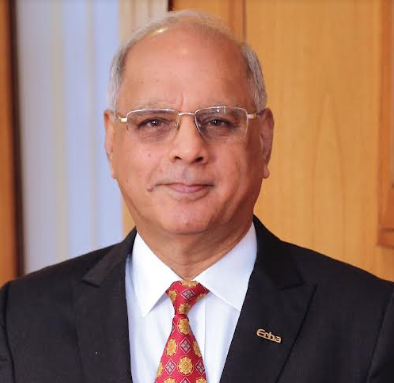Expecting 200% weighted tax deduction on expenditure made on R&D of medical devices: Transasia Erba Group
January 20, 2022 | Thursday | Views
Suresh Vazirani, Founder Chairman, Transasia Erba Group International of Companies
"2022 will see an increasing number of labs being equipped to do more in less time. The focus will be on digitization and lab automation to create an ecosystem where patient data can transit seamlessly between pathologists and specialists.
The industry looks forward to crucial government support that is needed to help this industry grow for the Atma Nirbhar Bharat. The government also needs to follow the WHO recommendation for making essential diagnostics available free of cost to everyone in the country.
While technology is expected to continue to make in-roads, I reiterate that affordability and accessibility of healthcare need to take centre-stage. I am hoping that a major focus in the Union Budget 2022 will be given to the diagnostic industry, as it is the starting point to building a Healthy and Happy India. As per WHO, over 70% of treatment decisions depend on diagnostic tests.
While Make in India continues to remain the central focus for the government, as an Indian manufacturer, we wish there would have been some more efforts on encouraging Make in India and reducing the dependency on imports. Make in India is the only way to make healthcare more affordable in India. However, at present there is very little incentive for a medical devices company to change from importing and begin Make in India.
As an industry body member, I expect the following from the Union Budget 2022, to encourage Make in India:
Why India should support development of Diagnostic industry?: As the COVID pandemic has shown, diagnostic tests are absolutely essential for preventing spread of every disease. We all know that not only prevention is better than cure but prevention costs just 2% of what it costs to cure. Hence it is essential that a developing country like India should spend more money on prevention of disease than on curing it.
High import dependency: Presently, India has a high medical device import dependency of 86% as per Pharma Bureau and NITI Aayog report. Hence it is absolutely essential for India to ensure faster Make in India initiatives and achieve at least 50% local production.
High GST of 18% on diagnostic equipment: It is unbelievable that the Government is charging the same high GST rate of 18% even on essential diagnostic equipment as it does on non-essential and luxury products. We have been demanding reduction in the GST rate on medical supplies, diagnostic equipment, and devices from the current 18 percent to 5 percent. This would help in making affordable healthcare a reality.
Reality is that introduction of GST has worked against Make in India. The implementation of GST has led to imported devices being cheaper by 11%. In addition, there being no import duty on blood analyzers, makes it difficult for the Indian manufacturers to compete with the cheaper imports. The interests of the domestic manufacturers need to be protected through a revision in the GST regime so that not everyone gets the benefit of input credit.
Providing free healthcare to every citizen of India is the Government’s constitutional responsibility. It needs to focus on reducing the medical expenditure burden on general public, which currently bears almost 70 percent of all medical expenditure. While the government has exempted the healthcare services from GST, the taxation on the medical supplies and devices, ultimately is a hindrance in bringing down the cost of treatment. The common man can get some relief from this burden by a reduction in the GST rate on medical supplies, diagnostic equipment and devices. The GST rate, which currently stands at 18 percent, should be no more than 5 percent.
Inverted import duty structure: Even now, the import duty on several raw materials is higher than that on finished products. In fact, India's import duty is the lowest among BRIC countries, at zero to 7.5 percent - making it cheaper to import devices rather than encouraging home grown, cutting edge technology Indian devices. This should be raised to 15-20 per cent, as a lower import duty dissuades manufacturers from producing them in India. To reduce the dependency on imports, we expected the Government to provide reasonable tariff protection for enabling Make in India.
Production-Linked Incentive (PLI) Scheme: At present the PLI rate for diagnostic products is just 3-5%. For Make in India to succeed this rate needs to be increased to at least 15%. This will make Indian manufacturers globally competitive, attract investment in the areas of core competency and cutting-edge technology; ensure efficiencies; create economies of scale; enhance exports.
R&D: Today medical technology is developing very fast. To keep up with the changing technology, Indian manufacturers need to build R&D infrastructure which needs huge amount of investment in R&D. To encourage R&D in India, we expect the Government to provide 200% weighted tax deduction on expenditure made on R&D of medical devices.
Encouraging exports: Introduction of export incentives would lead to further encouraging this growth engine for the economy and help India become a global leader in medical devices.
The above changes can fulfill the Government’s commitment to an affordable healthcare system for all."









